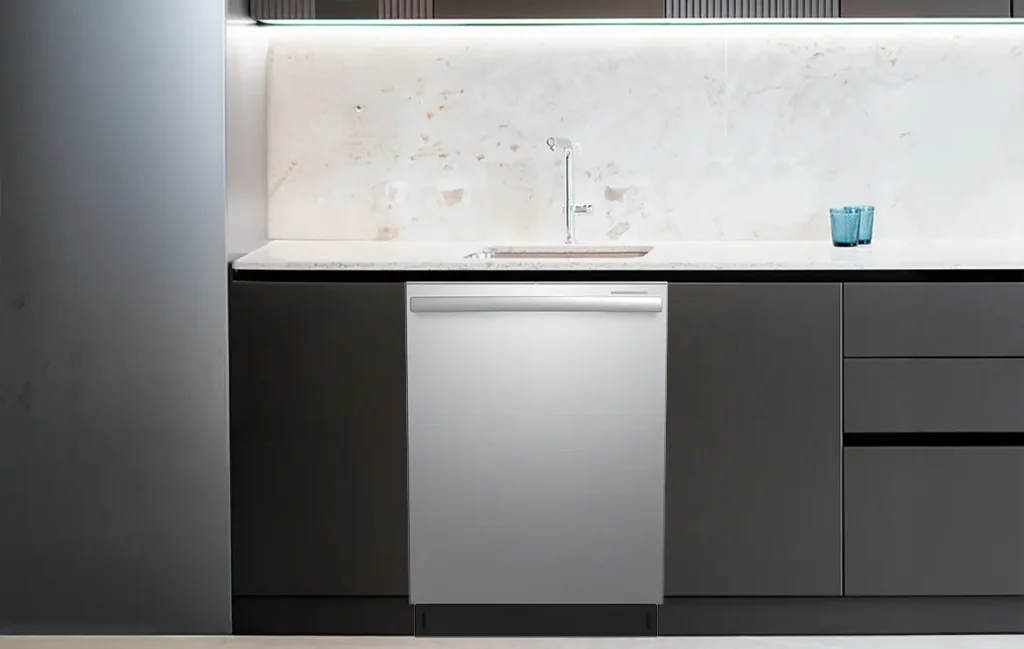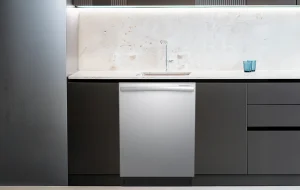
Let’s be honest. The modern home is a symphony of whirs, hums, and rumbles. The dishwasher’s percussive spray, the washing machine’s frantic spin cycle, the refrigerator’s sudden, low groan—it’s a soundtrack of convenience that can, frankly, become a major source of stress. You know the feeling. Trying to enjoy a movie or a quiet conversation, only to be drowned out by the mechanical orchestra in your utility room.
Well, good news. A quiet revolution is happening in home appliance design. Manufacturers are finally treating noise not as an unavoidable byproduct, but as a design flaw to be engineered out. This isn’t just about luxury; it’s about creating a calmer, more serene living environment. Let’s dive into the clever tech that’s bringing the volume down.
Why the Sudden Push for Quiet? It’s More Than Just a Whim
Open-concept floor plans are a big driver here. When your kitchen, living room, and dining area are all one space, a noisy appliance doesn’t stay in the kitchen. It invades your entire living area. Add in the rise of remote work and multi-generational households, and the demand for quiet has skyrocketed. People are simply spending more time at home and are more aware of—and annoyed by—the acoustic environment.
The Science of Silence: How They’re Hushing Your Appliances
Reducing noise isn’t magic. It boils down to a few key principles: isolating vibration, dampening sound, and using smarter, quieter motors. Here’s a breakdown of the most common technologies.
1. Vibration Control and Sound Dampening
Think of a drummer on a hard floor versus one on a thick rug. Vibration is the enemy of quiet. Appliance makers are now using advanced sound-dampening materials extensively.
- Insulation: It’s not just for temperature. Thick blankets of acoustic foam are layered inside dishwashers and washing machines, absorbing sound waves before they can escape the cabinet. It’s like putting a winter coat on your appliance, but for noise.
- Stable, Sturdy Frames: Flimsy panels vibrate and amplify noise. Reinforced frames and heavier-gauge steel construction provide a more rigid structure that simply has less tendency to rattle and hum.
- Anti-Vibration Pads and Mounts: This is a big one for washing machines and dryers. Instead of being bolted directly to the machine’s frame, the motor and drum are often mounted on special, flexible dampers. These act like shock absorbers, swallowing the vibrations from an off-balance spin cycle before they can travel through your floor.
2. The Heart of the Matter: Quieter Motors
The motor is often the noisiest component. The shift from traditional brushed motors to brushless DC motors (BLDC) has been a game-changer.
BLDC motors are smoother, more efficient, and significantly quieter. They use electronic controllers instead of physical brushes to transfer power, which eliminates a major source of friction and noise. You’ll find these in the best quiet vacuum cleaners, refrigerators, and washing machines. They’re the difference between a loud, grating whine and a soft, low purr.
3. Smarter Engineering for Quieter Operation
It’s not just about the parts; it’s about how they work together. Modern appliances are getting smarter about their operation to reduce noise.
- Inverter Compressors (Refrigerators): Old refrigerators use a compressor that turns on at 100% power and then shuts off completely with a loud “clunk.” Inverter compressors, on the other hand, can run at variable speeds. They slowly ramp up and down, maintaining temperature with a gentle, near-constant hum instead of jarring start-stop cycles. The difference is night and day.
- Direct-Drive Motors (Washing Machines): Traditional machines use a belt and pulley system to spin the drum, which can be noisy and prone to wear. Direct-drive motors connect the drum directly to the motor. Fewer moving parts means less noise, less vibration, and greater longevity.
- Precision Spray Arms (Dishwashers): Instead of just blasting water everywhere, newer dishwashers use carefully designed spray arms and targeted water jets. This not only cleans more efficiently but does so with less chaotic, water-hammering noise.
A Room-by-Room Guide to Quieter Appliances
So what does this look like when you’re shopping? Here’s a quick guide to what to look for in each major appliance category.
| Appliance | Key Quiet Technology to Look For | What “Quiet” Sounds Like (in decibels, dB) |
| Dishwasher | Full insulation, sound-absorbing base, precision spray arms, brushless motor. | 44 dB or lower is library-quiet. 50 dB is a normal conversation. |
| Washing Machine | Direct-drive motor, anti-vibration system, reinforced frame. | Under 60 dB for wash, under 70 dB for spin is very quiet. |
| Refrigerator | Inverter compressor, thick door/door seals, sound-dampening panels. | Under 40 dB is excellent. You might not hear it at all. |
| Range Hood | DC motor, insulated ducting, aerodynamic fan design. | Look for a high “sones” rating at low speed (e.g., 1-2 sones). |
Beyond the Spec Sheet: The Real-Life Impact of a Quieter Home
Sure, decibels are a useful metric. But the real value is felt, not measured. A quiet dishwasher means you can run it after dinner without pausing your movie. A silent refrigerator lets you sleep soundly through the night. A hushed washing machine allows you to work from home without distraction.
It transforms these functional tools from intrusive machines into seamless partners in your home life. They do their job without demanding your attention—or your sanity. That’s the real goal, isn’t it? A home that serves you, not one that constantly announces its own labor.
The Future is (Almost) Silent
The pursuit of quiet is far from over. We’re starting to see AI play a role, with appliances that can detect their own imbalance and correct for it mid-cycle. New composite materials promise even better sound absorption without adding bulk. The hum of the home is becoming a whisper.
In the end, investing in quiet technology is an investment in your daily peace. It’s a choice to eliminate a low-grade, persistent stressor you might not even realize you’ve gotten used to. It’s about reclaiming the soundscape of your own home. And honestly, that’s a upgrade that’s worth listening for.








